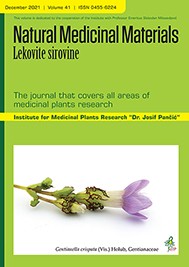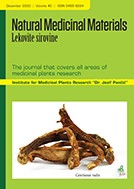Ambrosia artemisiifolia L. is an allergen species that belongs to the group of invasive weeds, and is very frequent and present in our region. The use of essential oils in the control of weeds attracts great attention of researchers. Many of them have already pointed out the ability of some oils and/or their individual components to delay seed germination of various weeds or completely inhibit it. In this paper, we present results of the efficacy of three essential oils on A. artemisiifolia seeds; the trials were carried out using two different in vitro methods, in which the percentage of seed germination was measured 7th day. In testings with seeds soaked in essential oil solution, in Petri dishes (500 ml in 100 ml of distilled water), a significant inhibition of germination was observed in the case A. graveolens and S. officinalis oil (100 % and 97 % , respectively), while the oil of S. montana demonstrated slightly weaker inhibitory effect (86 %). When essential oils were applied in form of a vapour (an oil droplet of 25 ml applied on the inner side od Petri dish lids), A. graveolens and S. officinalis oils inhibited the seed germination 100 % and and 95 % , respectively , while the oil of S. montana again demonstrated the weakest inhibitory effect (52 %).
The aim of the presented research was to determine whether the application of the essential oils of A. graveolens, S. officinalis and S. montana in form of a solution or vapor, affects, and to what extent they are important for germination of seeds of the weed species A. artemisiifolia L.












